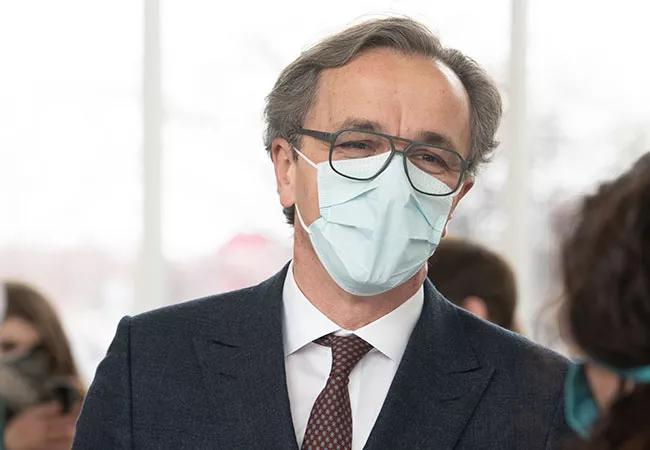A message from Cleveland Clinic’s CEO and president

Advertisement
Cleveland Clinic is a non-profit academic medical center. Advertising on our site helps support our mission. We do not endorse non-Cleveland Clinic products or services. Policy
Beautiful summer days are ahead. Many regions across the country have flattened the curve. Businesses are reopening with safety measures in place. These are all positive things, but this pandemic isn’t over yet. Now is not the time to let our guards down. We must remain vigilant in taking steps to protect ourselves and each other.
Over the past few weeks, we’ve been pleased to welcome many of you back to our Cleveland Clinic locations. We continue to adapt to remain one of the safest places in healthcare. You are an important part of this.
When you enter a Cleveland Clinic facility, you’ll have your temperature checked for a fever. This is an additional step to help keep our patients and caregivers safe. In some locations, we use no-contact, hand-held thermal scanners. In other places, we use a thermal imaging system that you walk through (you might not even notice it).
We are strongly encouraging patients and visitors to wear a mask when coming to any Cleveland Clinic location. We’ll offer you a mask to wear, or you can bring a mask with you.
Masks play a key role in controlling the spread of the coronavirus in our communities. They help prevent people who don’t know they’re infected from potentially exposing others to the virus.
Yes, all of our Cleveland Clinic caregivers also wear masks. Their masks protect you, and yours protects them.
Yes. Masks don’t cancel the need to practice social distancing, but they do provide an extra layer of protection.
As we all resume some of our pre-pandemic activities, we must not take our eyes off of COVID-19. When you’re considering whether an activity is safe to do, it comes down to three main factors: time, space and people. Carefully weigh how much time you’ll be spending there, how enclosed or ventilated the space is, and whether the people you’ll be interacting with are practicing the same safety measures.
Advertisement
We can all play a role in keeping our communities safe and healthy. We are all on this journey together.
Advertisement
Advertisement

Patients report improved sense of smell and taste

Clinicians who are accustomed to uncertainty can do well by patients

Unique skin changes can occur after infection or vaccine

Cleveland Clinic analysis suggests that obtaining care for the virus might reveal a previously undiagnosed condition

As the pandemic evolves, rheumatologists must continue to be mindful of most vulnerable patients

Early results suggest positive outcomes from COVID-19 PrEP treatment

Could the virus have caused the condition or triggered previously undiagnosed disease?

Five categories of cutaneous abnormalities are associated with COVID-19